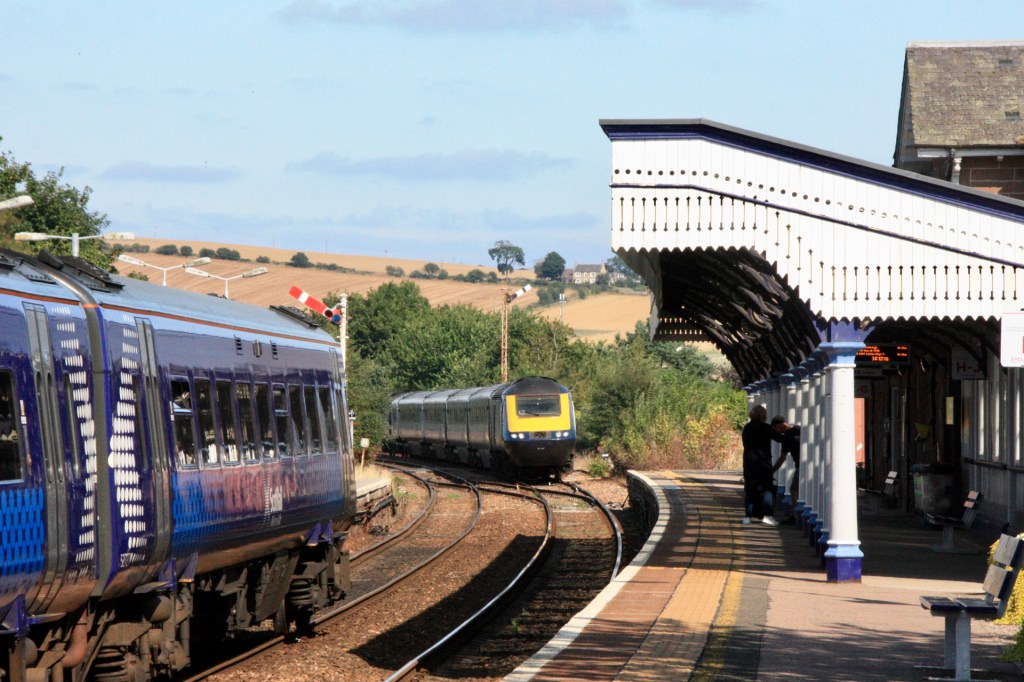
After my early summer trip to Arbroath and Inverkeilor (blog post: 10 June 2021), it’s time to take another train trip from Edinburgh to North-East Scotland, to see and photograph trains and signals at the final outpost of mechanical signalling on the East Coast Main Line to Aberdeen.
Stonehaven, 16¼ miles south of the Granite City, is home to an attractive and listed Caledonian Railway Type 2 box dating in its present form from 1901, but the extension of a much earlier Caledonian Railway box dating from the opening of the station in 1849, and now controls a total of six semaphores.
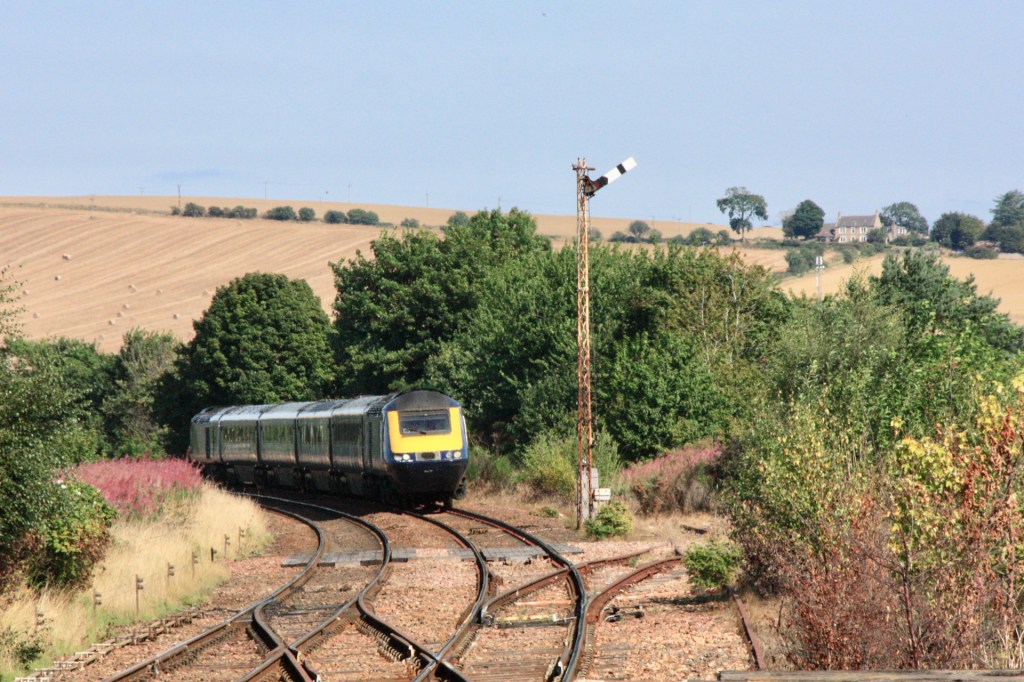
What makes this a particularly attractive photographic location is that the station stands on a left hand curve, with five of its semaphores in view from the platform ends and three of them, all in the up (southbound) direction, being mounted on lattice posts.

Looking north from the station, where the signal box stands at the end of up platform (2) you will see down starter SV17 at the end of platform 1, while 100 yards beyond is a tall lattice post holding up home signal SV7 (photo above). Further away around the long left hand bend, and now obscured by vegetation, is down section signal SV16.

Turning to the south end of the station, the closest signal is up starter SV8 on another shorter lattice post, beyond which are a down home (SV18) and up section signal SV9, also on a lattice post.

Day-time passenger services serving Stonehaven currently comprise Edinburgh/Glasgow-Aberdeen workings, usually formed of the Scotrail Inter7City 2+4 HST units, Class 158-worked local services between Inverurie and Montrose and occasional LNER Class 800 Azuma services between King’s Cross/Leeds and Aberdeen.

There is a limited amount of freight traffic to and from Aberdeen that passes Stonehaven, but one regular working I had hoped to see – cement tanks from Oxwellmains Lafarge to Aberdeen Craiginches – was cancelled, as it had been on my June visit to Inverkeilor.
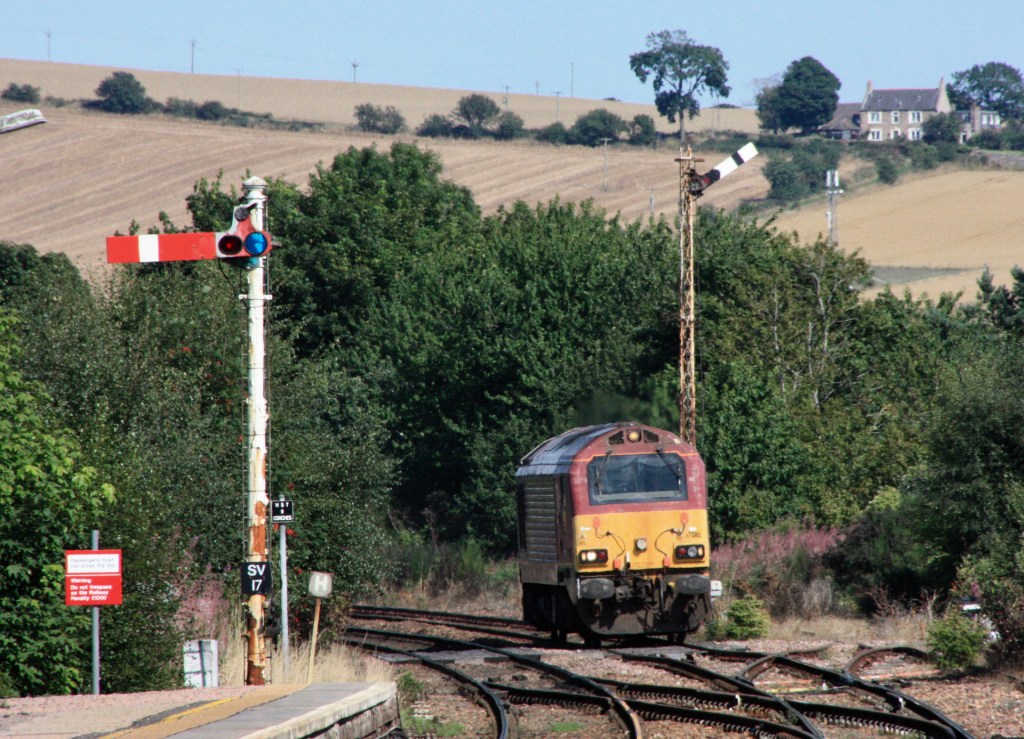
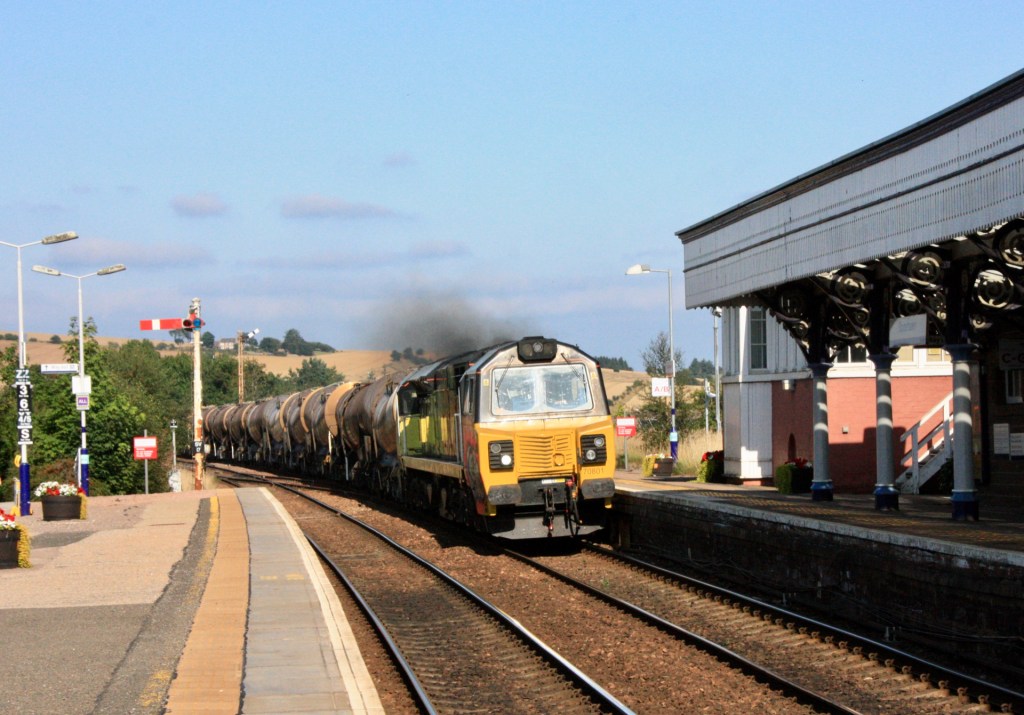
But on the day of my visit (Wednesday, 1 September) I was able to see a trio of non-passenger workings, comprising DB 67016 working light engine from Inverness to Montrose and back, Colas Rail 70801 powering through with tanks from Aberdeen Waterloo to Workington (above) and then DRS 66301 on a train of Tesco containers from Grangemouth to Aberdeen Craiginches (photo below).
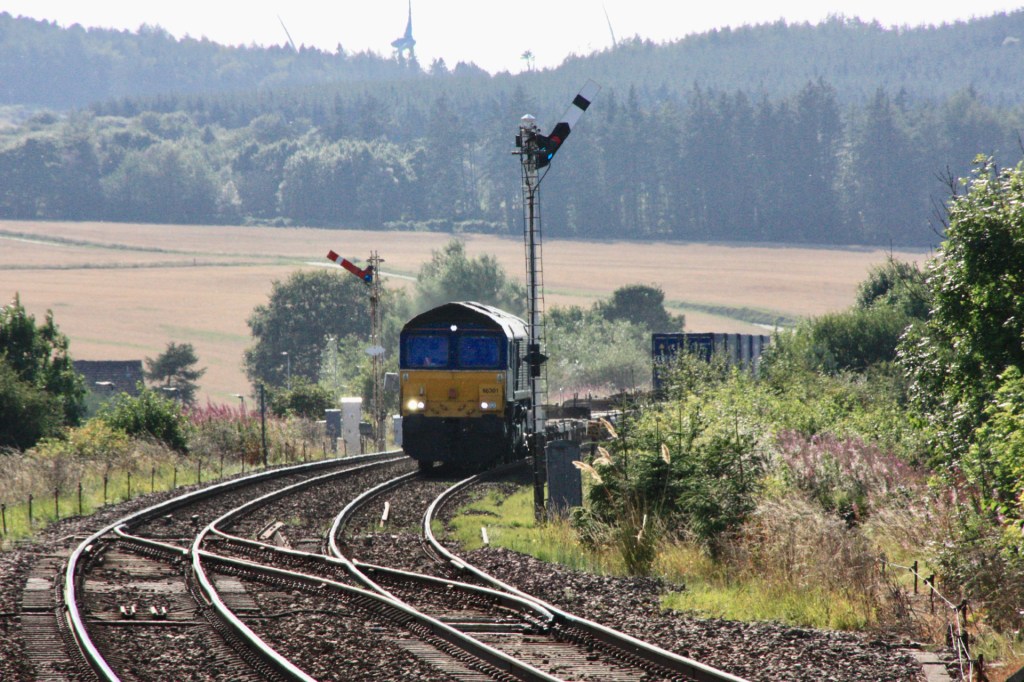
Along with its signal box, Stonehaven’s two-storey station and a nearby goods shed are also listed buildings, with the citation for its listing describing station building as being in “an attractive Italianate style” and “the only surviving example of the original stations on Aberdeen Railway’s main line”.
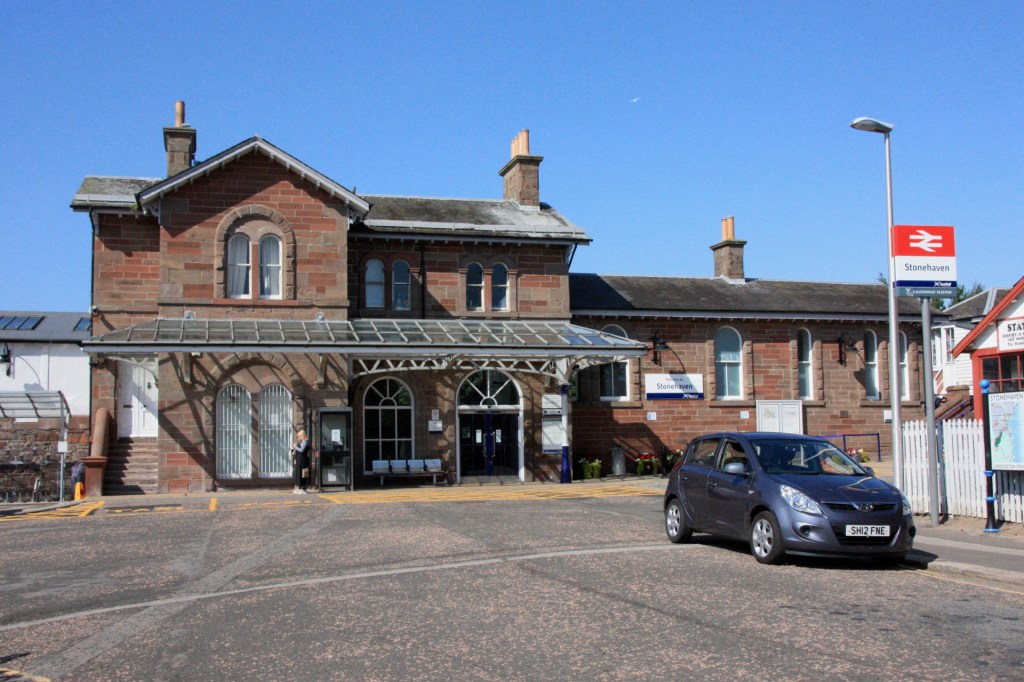
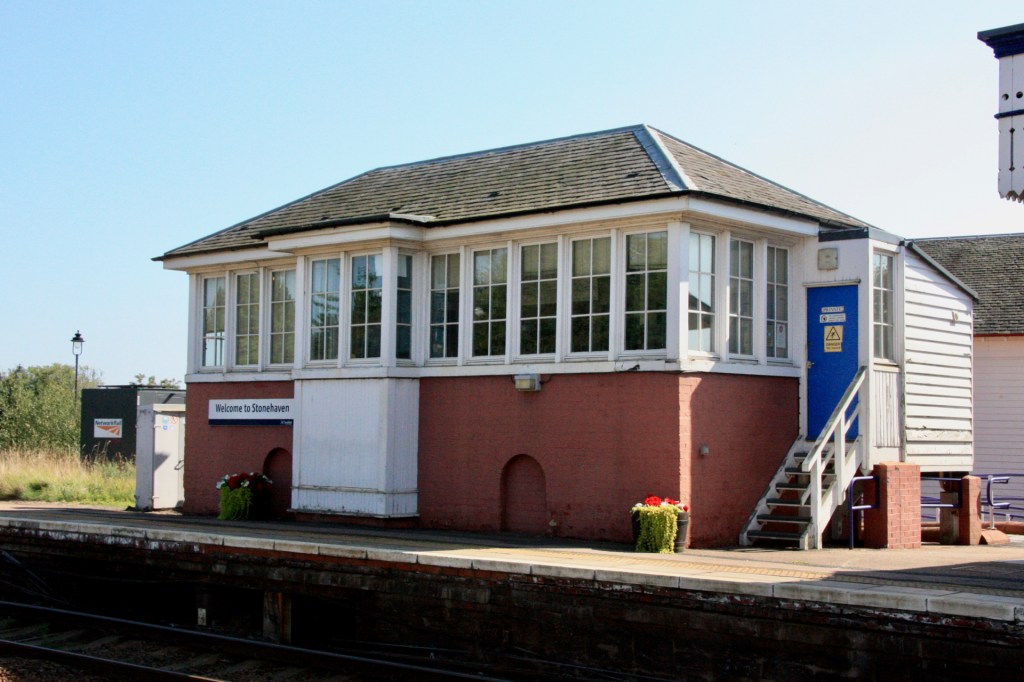
That citation describes the signal box as being “a Caledonian Railway (Northern Division) Type 2 box installed in 1901 and sited notably and prominently on the platform to the left of the main station building.” It adds that very few of the Type 2 design, which first appeared in 1889, remain, with two excellent off-platform examples being Stirling North and Stirling Middle, also both listed.
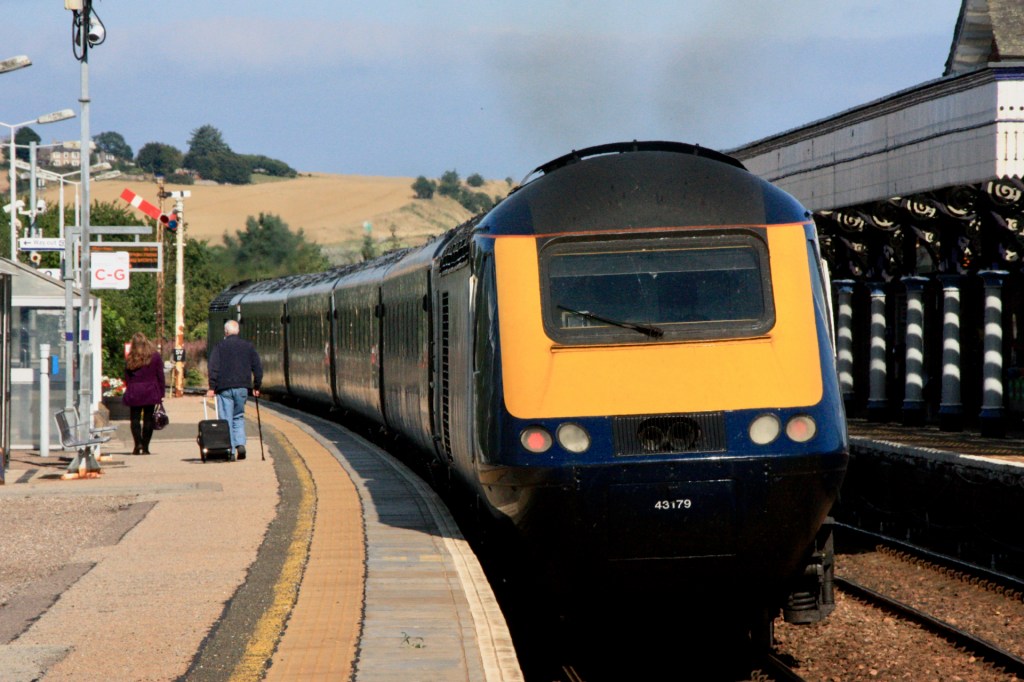
Stonehaven is 5½ miles north-east of the nearest outpost of mechanical signalling on the East Coast Main Line, at remote Carmont. It received unwanted recognition on the occasion of the fatal derailment of a Scotrail Inter7City HST on 12 August 2020, when the signaller at Carmont halted the 06.38 Aberdeen-Glasgow Queen Street service to advise the driver of a landslip further south, between Carmont and Laurencekirk.
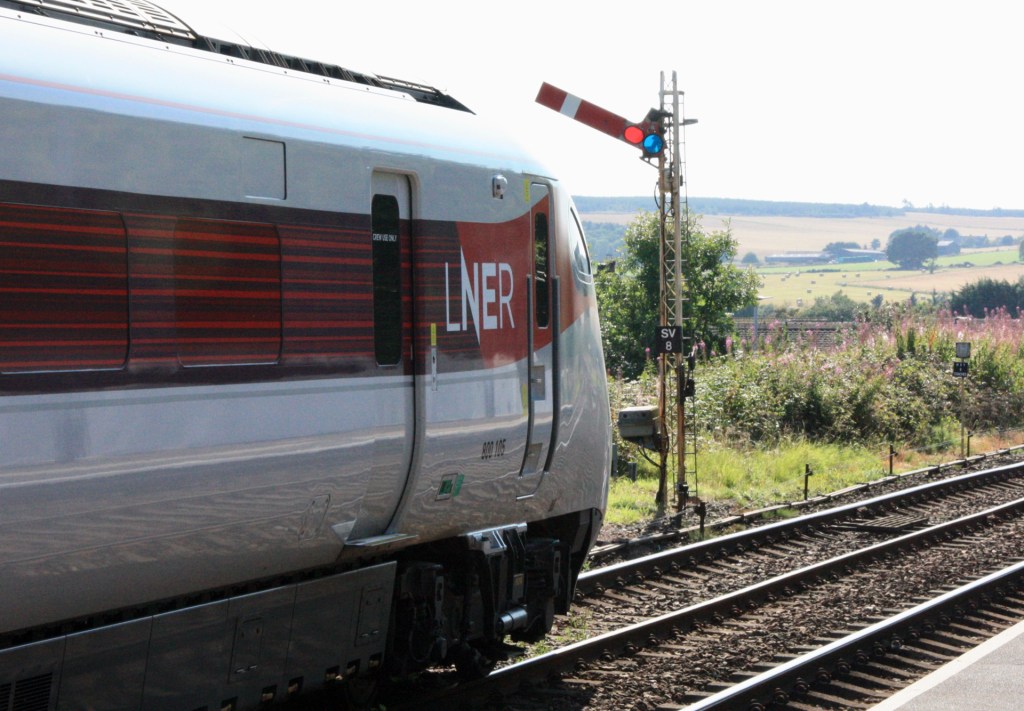
After being held for more than two hours the HST crossed over to the down (northbound) line in order to return to Aberdeen. Despite the onset of fine weather another landslip had occurred in that time just 1.4 miles north-east of Carmont, which the HST ran into while travelling at 72.8mph, leading to the fatal derailment which killed three of those on board, and injured the remaining six people aboard the train.
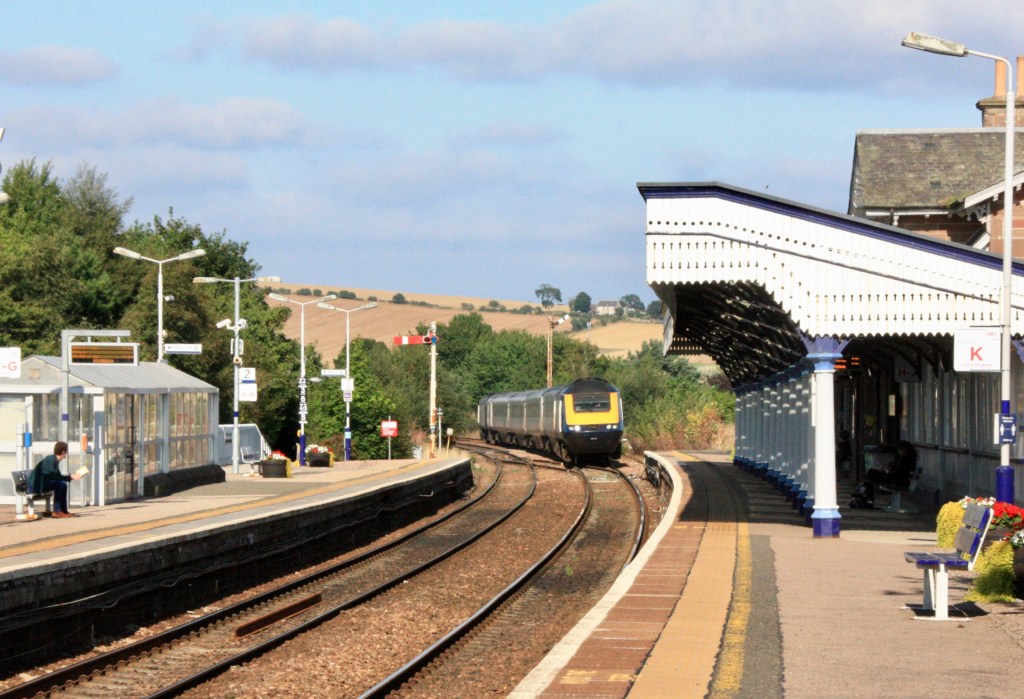

You must be logged in to post a comment.